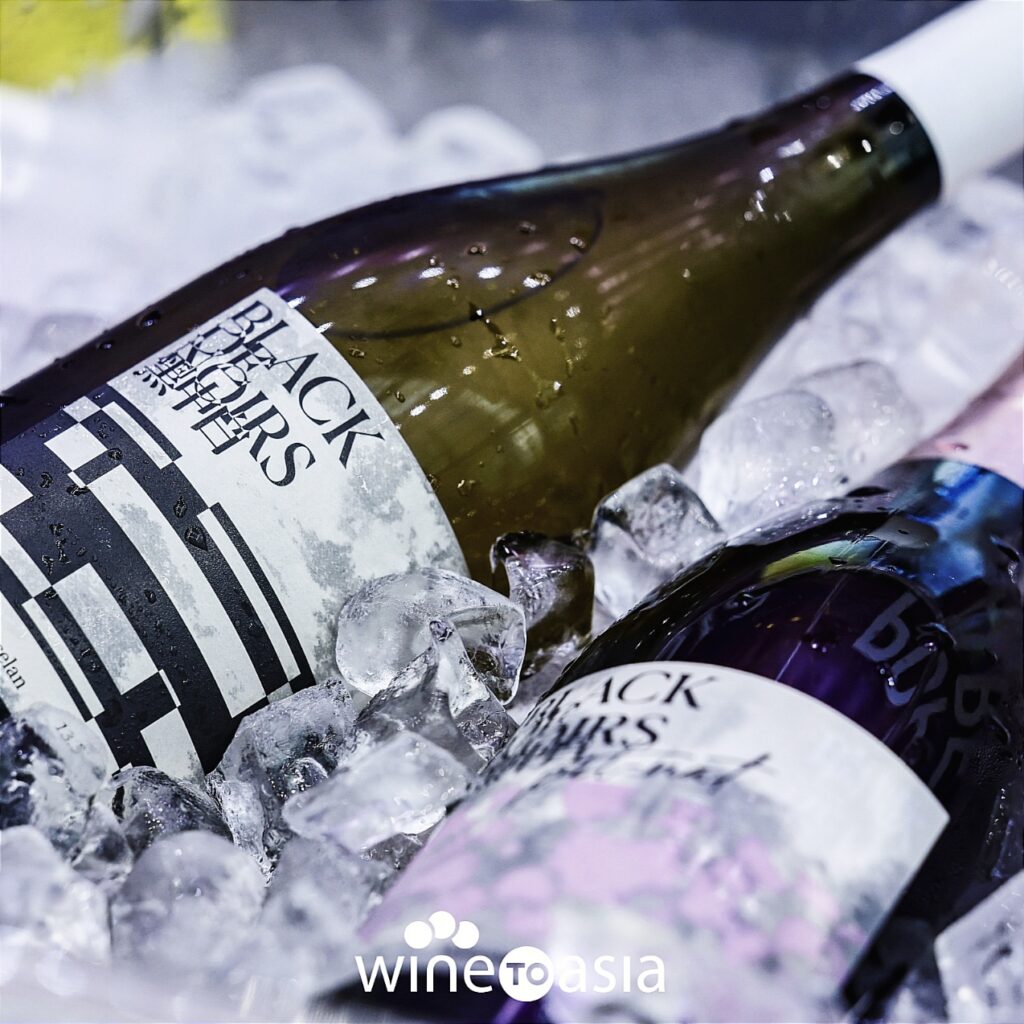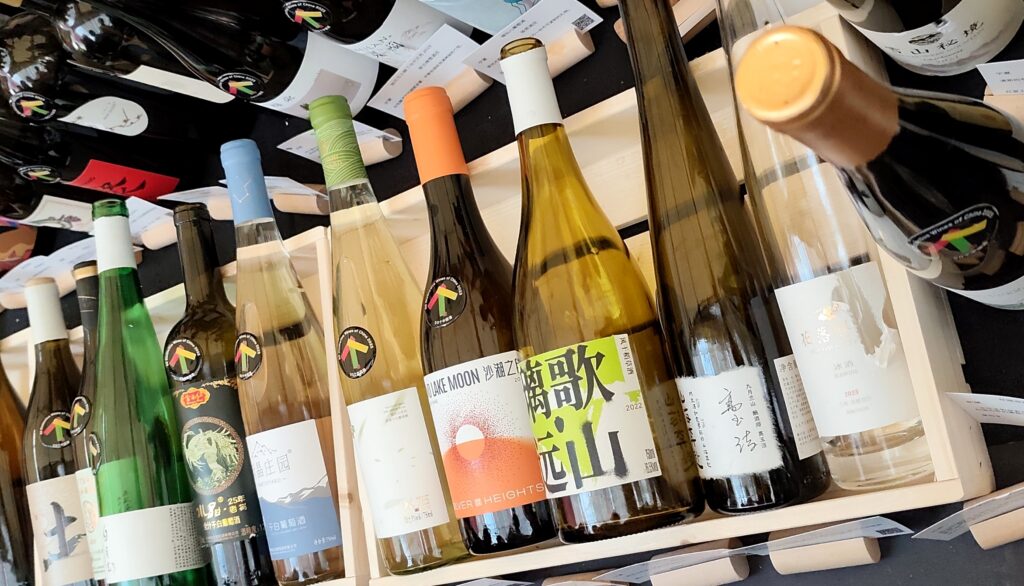
(A version of this post first appeared in the free Grape Wall newsletter. Sign up here.)
One highlight of last month’s Wine to Asia fair in Shenzhen was a popup for the high-altitude wines of Yunnan, including a dozen delectable Chardonnays.
These were just a few of the white wines that I and thousands of other attendees tasted–wines from Italy, Georgia, Greece, France, South Africa and the United States, among others.
And while my own popup event was for the red grape variety Marselan, the first of our fifty bottles to run dry was a “white” version from Ningxia.

It was more evidence of white wine’s rising strength in China and justification for my declaration of “White Wine Summer” in a recent Grape Wall newsletter (subscribe for free here).
I wrote about this trend in a Wine-Searcher article published today, with a focus on how claims of Chinese consumers’ aversion to cool / cold drinks have been undermined by the rise of beverages such as cocktails and coffees (including iced) and now white wine.
“How to explain the gap between such cultural norms and the current rise of white wines? … when you have a billion-plus people, the exceptions to a cultural rule can equal the population of a mid-sized nation.”
That article also looks at how major dietary changes and the spread of refrigerators and ecommerce helped pave the way for white wine, which has a century-plus of history in China to begin with.
And it includes success stories, like Greek wine importer Liakos Constantinos, who recently told me three-quarters of the wines sold at his restaurant Golden Olives in Shenzhen are white. And business-to-business sales of his white wines have more than doubled to 50% during the past ten years.

You can find many such examples. And it goes for retail, too.
Claudia Masueger of CHEERS, with wine shops across China, has long seen white wine rank among the top sellers. She has also told me white wines can not only outperform reds during the summer months but also now sell well all year long.
To be honest, I have anticipated the White Wine Summer moment for a decade. And it feels like the wait was due far more to trade conservatism and economic realities, including the pandemic, than to consumer desires.

Ten years ago, I interviewed Helene Ponty of Bordeaux winery Ponty for an article in Wine Business International. The extended quotes by Ponty, then based in China, are revealing:
“If I do an event for consumers [in China], they usually love the white wine, particularly women. I feel like many women are intimidated by red wine or afraid they will get drunk if they have red wine, but they feel better about white wine,” said Ponty.
“They also appreciate the taste more. For our wine in particular, they like the freshness and the slight sweet note. They find the whites less overwhelming and less strong than the reds.”
But the second part of her comment explained a harsh reality.
“If we do an event for distributors, the attitude is very different. They will say they don’t need white wine, or that their customers don’t drink white wine. So, it led me to think that the problem lies with the distributors, who have an ingrained mindset that people do not want white wine. I think part of the problem is that distributors do not understand white wine as well as they do red wine, because they do not have experience with it. They do not feel comfortable recommending it….”
Ponty then discusses a trade dinner where one man declares he won’t drink white wine because it is “for women”, which makes the other men decline it, too.
(For the full details, see: “Trade Secret: Don’t Blame Consumers for Low White Wine Sales in China.“)

That scenario is all too common. How often have we heard a market of a billion people narrowed down to blanket statements? People like red wine because the color is lucky. People don’t like white wines because they are cold. Rose wines are for women. Consumers aren’t interested in local wines.
Yet, as noted in recent newsletters, the market has steadily diversified, whether that means natural wine bars in Shanghai or arcane wines being pitched on social media or Black Muscat, Tempranillo and Grechetto coming out of China’s vineyards.
In terms of white wines, the usual suspects are gaining strength. German Riesling and New Zealand Sauvignon Blanc and French Chardonnay. But the miracles of the smart phone and ecommerce mean consumers can find so much more. Argentine Torrontes. Romanian Feteasca Regala. Or the Assyrtiko and Moschofilero imported by Constantinos.
Of course, in hindsight, this trend makes sense. China was making white wines a century ago and winning awards for them in the 1980s, the same decade the first major importer held taste tests with consumers and found they preferred… white wines. Unfortunately, taste is not always the biggest sales factor in an emerging wine market.
Now white wine can be rationalized as a sensible and refreshing counter to China’s scorching hot summers. As versatile for pairing with local cuisines. Even, in the face of the association of red wine with health, of having its own benefits–it appeals to a rising number of people who desire lighter wine and less alcohol.
Welcome, White Wine Summer!

(Get the free Grape Wall newsletter here. Follow on LinkedIn, Instagram, Facebook and Twitter. Grape Wall has no sponsors: help support the mission, including World Marselan Day via PayPal, WeChat or Alipay. Contact Grape Wall at grapewallofchina (at) gmail.com.)

Leave a Reply
You must be logged in to post a comment.